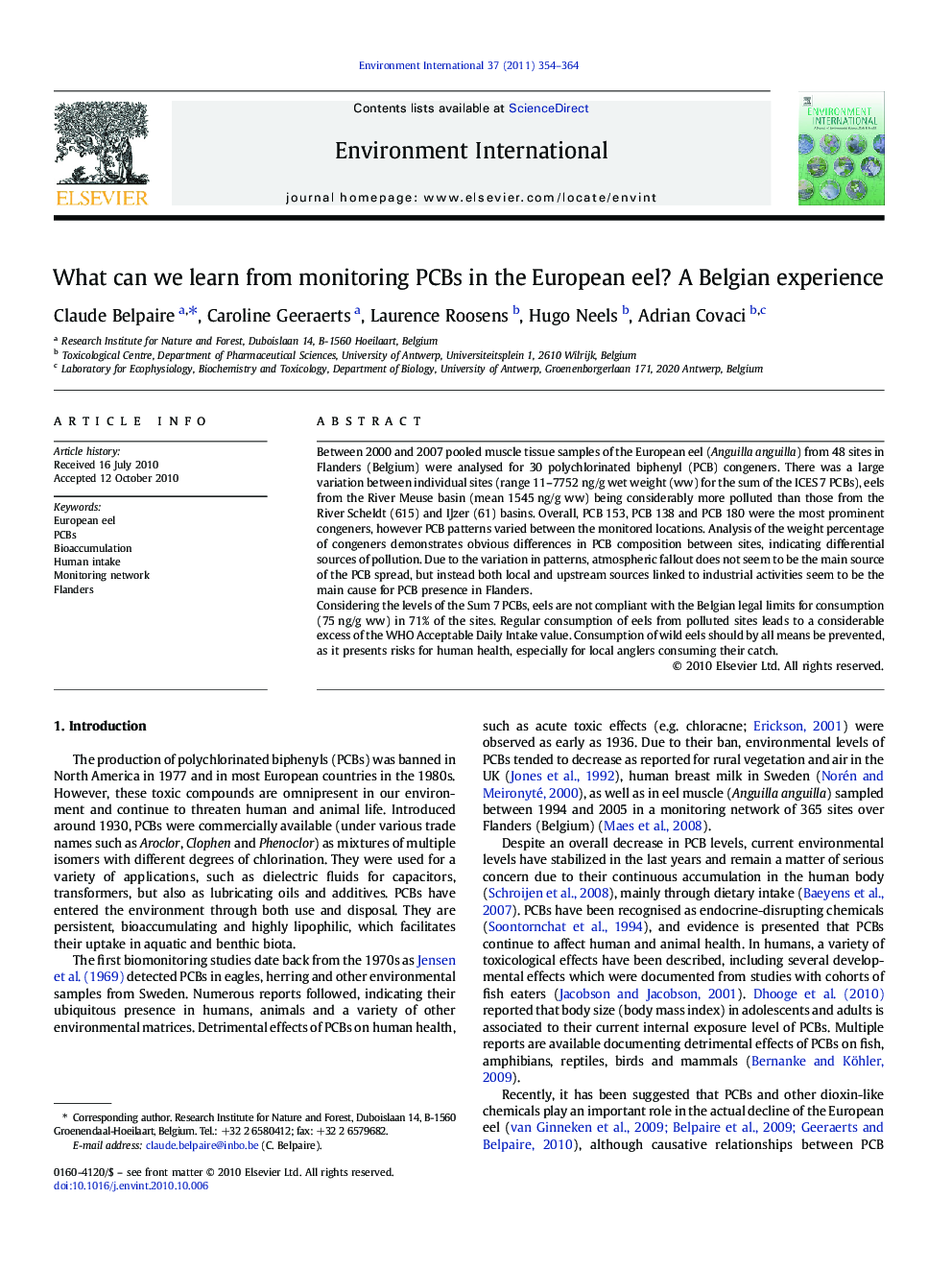| کد مقاله | کد نشریه | سال انتشار | مقاله انگلیسی | نسخه تمام متن |
|---|---|---|---|---|
| 4423228 | 1308816 | 2011 | 11 صفحه PDF | دانلود رایگان |

Between 2000 and 2007 pooled muscle tissue samples of the European eel (Anguilla anguilla) from 48 sites in Flanders (Belgium) were analysed for 30 polychlorinated biphenyl (PCB) congeners. There was a large variation between individual sites (range 11–7752 ng/g wet weight (ww) for the sum of the ICES 7 PCBs), eels from the River Meuse basin (mean 1545 ng/g ww) being considerably more polluted than those from the River Scheldt (615) and IJzer (61) basins. Overall, PCB 153, PCB 138 and PCB 180 were the most prominent congeners, however PCB patterns varied between the monitored locations. Analysis of the weight percentage of congeners demonstrates obvious differences in PCB composition between sites, indicating differential sources of pollution. Due to the variation in patterns, atmospheric fallout does not seem to be the main source of the PCB spread, but instead both local and upstream sources linked to industrial activities seem to be the main cause for PCB presence in Flanders.Considering the levels of the Sum 7 PCBs, eels are not compliant with the Belgian legal limits for consumption (75 ng/g ww) in 71% of the sites. Regular consumption of eels from polluted sites leads to a considerable excess of the WHO Acceptable Daily Intake value. Consumption of wild eels should by all means be prevented, as it presents risks for human health, especially for local anglers consuming their catch.
Research Highlights
► PCBs are still ubiquitous in our environment.
► PCB levels in eel show a high level of spatial variation.
► Not atmospheric fallout but local sources are the cause for PCB presence in Flanders.
► Consumption of wild eels should by all means be prevented.
Journal: Environment International - Volume 37, Issue 2, February 2011, Pages 354–364